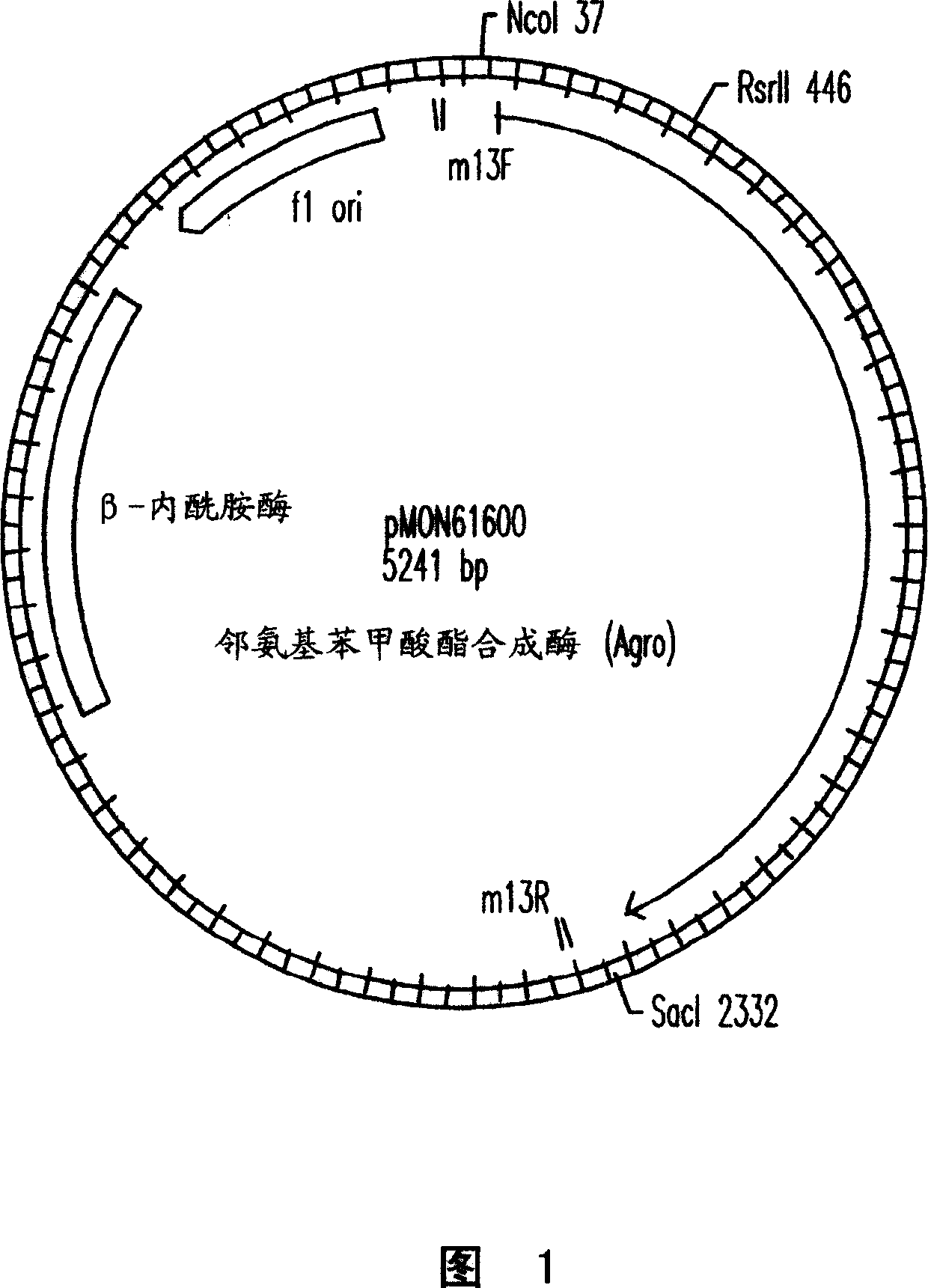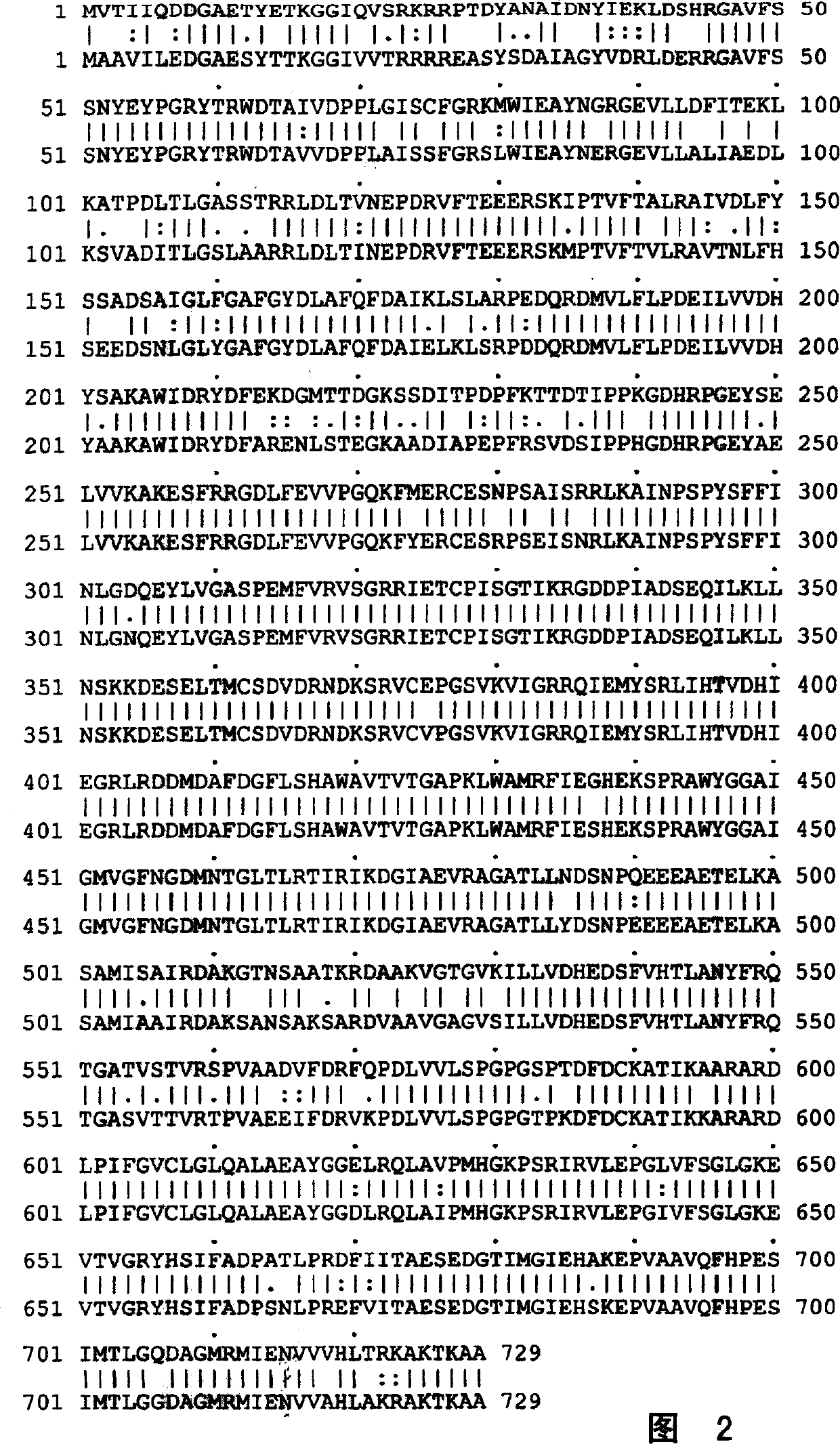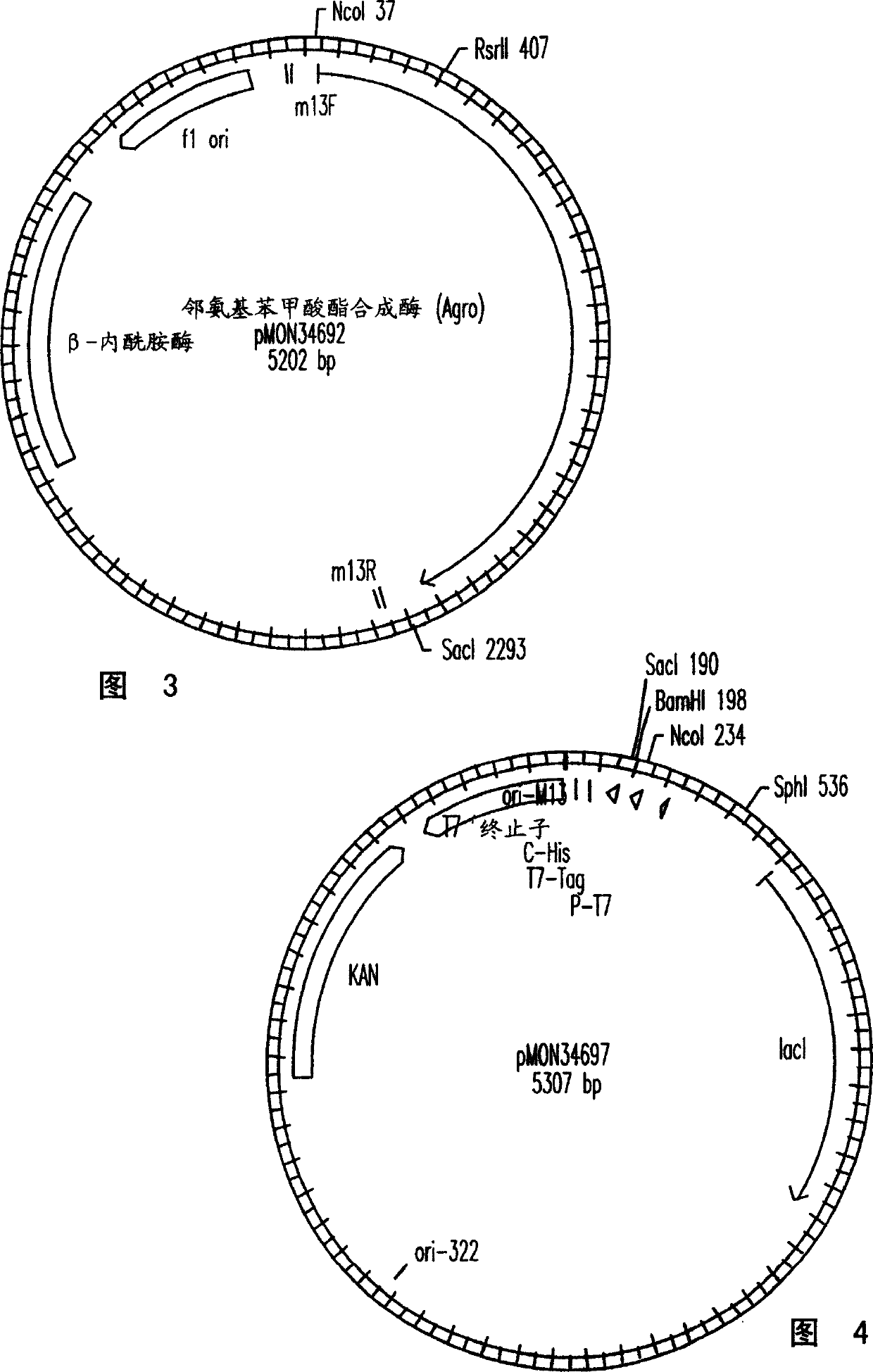Transgenic high tryptophan plants
A transgenic plant, tryptophan technology, applied in plant products, genetic engineering, plant genetic improvement and other directions, can solve problems such as instability
- Summary
- Abstract
- Description
- Claims
- Application Information
AI Technical Summary
Problems solved by technology
Method used
Image
Examples
Embodiment 1
[0336] Example 1: Isolation of anthranilate synthase from Agrobacterium tumefaciens and expression in E. coli.
[0337] This example describes the isolation of anthranilate synthase from A. tumefaciens and its expression in E. coli.
[0338] Cloning of Agrobacterium tumefaciens As
[0339]The Agrobacterium tumefaciens C58 genome sequence database (Goodner et al., Science 294, 2323-2328 (2001)). The retrieval consisted of tblastn using the blosum62 matrix (Altschul et al., Nucleic Acid Res., 25, 33893402 (1997)).
[0340] AS homologue clones identified in the Agrobacterium tumefaciens C58 genome sequence database were cloned by PCR using genomic DNA from Agrobacterium tumefaciens C58 (ATCC No. 33970) as a template. Use the following primers for the first round of PCR reactions:
[0341] 5'-TTATGCCGCCTGTCATCG-3' (SEQ ID NO: 47) and
[0342] 5'-ATAGGCTTAATGGTAACCG-3' (SEQ ID NO: 48).
[0343] Gene amplification parameters were as follows: (a) denaturation at 95°C for 30 sec...
Embodiment 2
[0359] Example 2: Transformation with wild-type Agrobacterium tumefaciens anthranilate synthase
[0360] Plants to Achieve High Trp Seed Levels
[0361] Expression vector pMON58120
[0362] Vector pMON58120 (Figure 34) encodes the 264 base pair Arabidopsis small subunit (SSU) chloroplast-directed peptide (CTP, SEQ ID NO:71) and the 2187 base pair wild-type Agrobacterium tumefaciens anthranilate Fusion between synthetase (AgroAS) open reading frames (SEQ ID NO: 1). See, Stark et al. (1992) Science 258:287. The expression of this open reading frame is driven by the soybean 7Sα primer (7Sα′) promoter.
[0363] After translation on cytoplasmic ribosomes, the fusion (immature protein) is introduced into the chloroplast from which the chloroplast targeting sequence has been removed. There are two cleavage sites in CTP1. The first site is 30 base pairs downstream of the CDS start (C / M), and the other is at the initial methionine (C / M). The second cleavage site does not...
Embodiment 3
[0383] Embodiment 3: The vector that comprises maize anthranilate synthase α-subunit gene pair
[0384] transformation of beans
[0385] The coding sequence for the alpha-subunit of maize anthranilate synthase was isolated from pMON52214 (Figure 22) by digestion with XbaI combined with partial NcoI digestion (see Anderson et al., US Patent 6,118,047). The resulting 1952 bp DNA fragment representing the anthranilate synthase coding region was gel purified and the ends were made blunt. Plasmid pMON53901 (Fig. 23) was digested with BglII and EcoRI to obtain a 6.8Kb fragment. After isolation, the ends of the 6.8Kb fragment were blunt-ended and dephosphorylated. The 1952Kb fragment containing the AS[alpha] gene was then ligated to the blunt-ended 6.8kb pMON53901 fragment to generate pMON 39324, a maize 7SP-AS[alpha]-NOS expression vector (Figure 24).
[0386] This pMON39324, maize 7SP-ASα-NOS cassette was then digested with BamHI to obtain a 2.84 Kb DNA fra...
PUM
 Login to View More
Login to View More Abstract
Description
Claims
Application Information
 Login to View More
Login to View More - R&D
- Intellectual Property
- Life Sciences
- Materials
- Tech Scout
- Unparalleled Data Quality
- Higher Quality Content
- 60% Fewer Hallucinations
Browse by: Latest US Patents, China's latest patents, Technical Efficacy Thesaurus, Application Domain, Technology Topic, Popular Technical Reports.
© 2025 PatSnap. All rights reserved.Legal|Privacy policy|Modern Slavery Act Transparency Statement|Sitemap|About US| Contact US: help@patsnap.com



